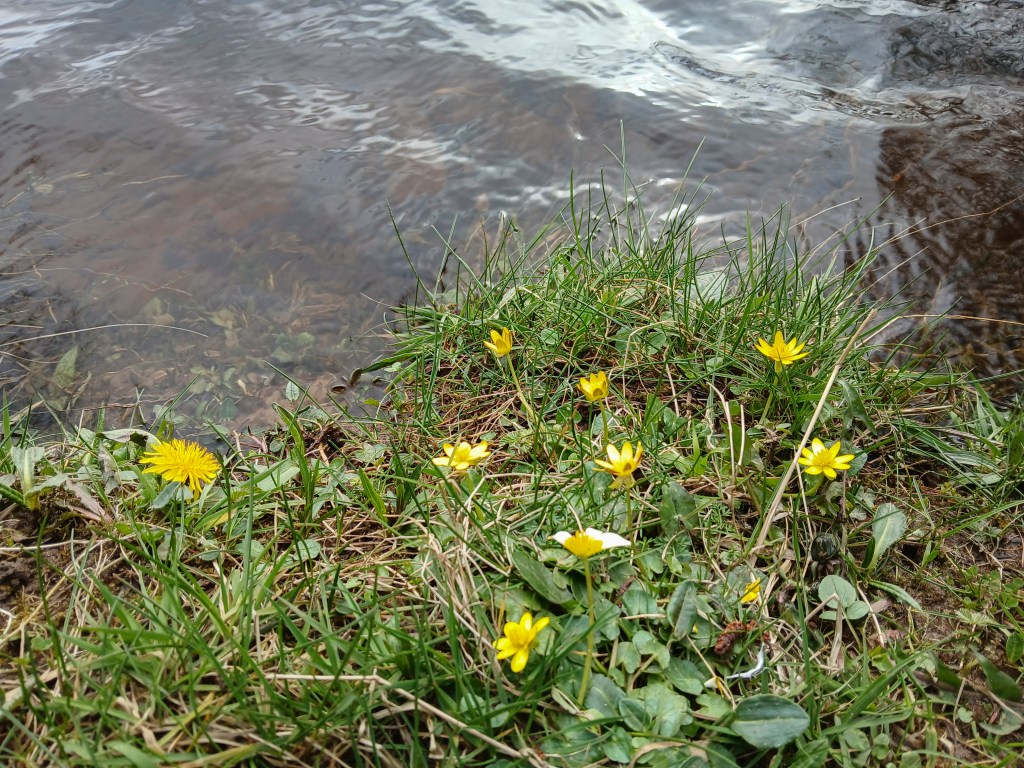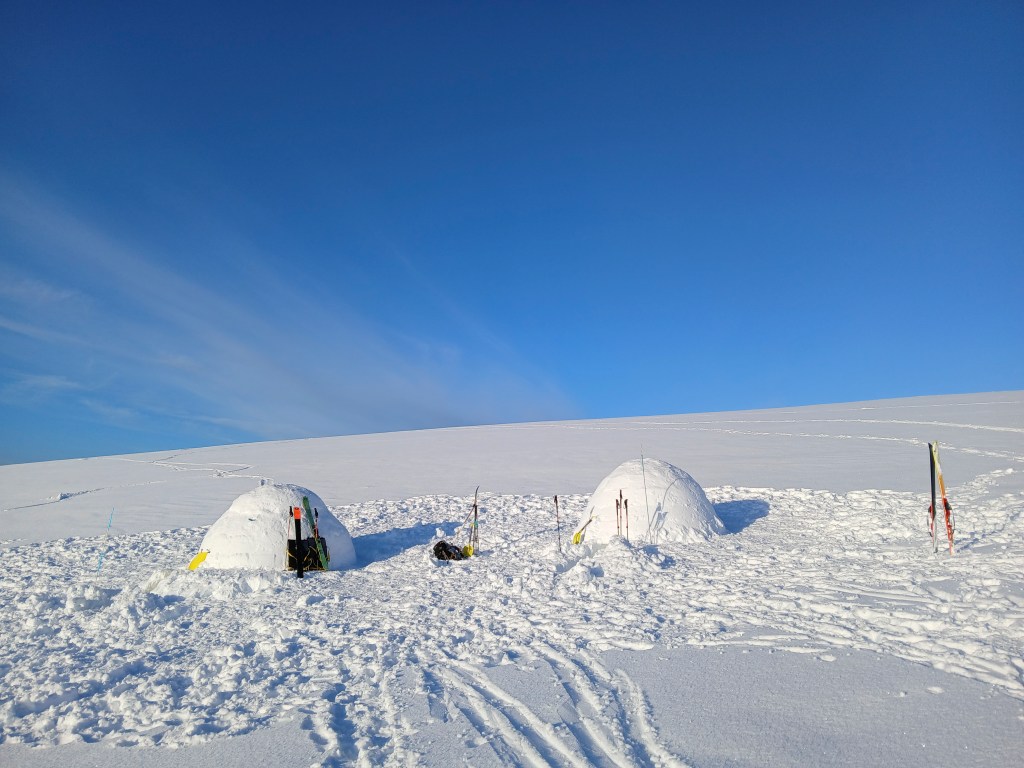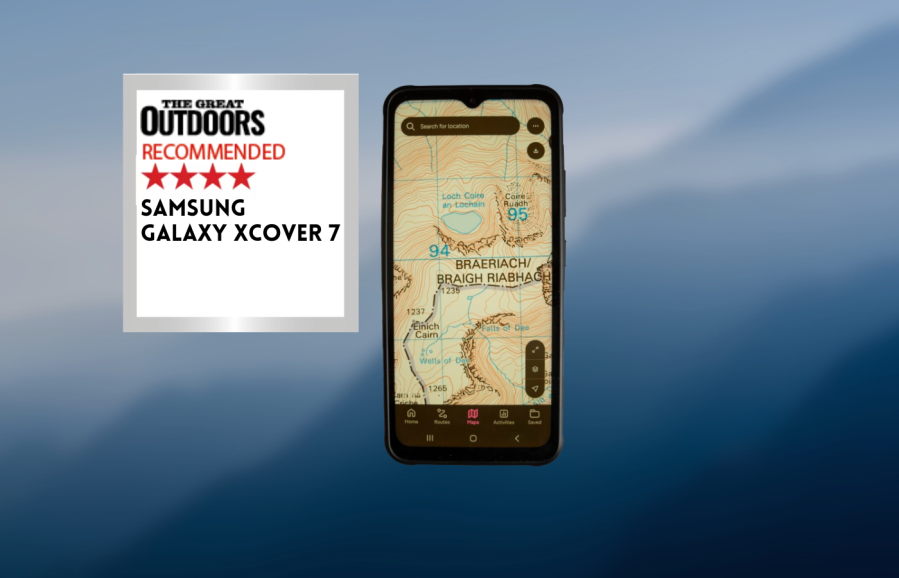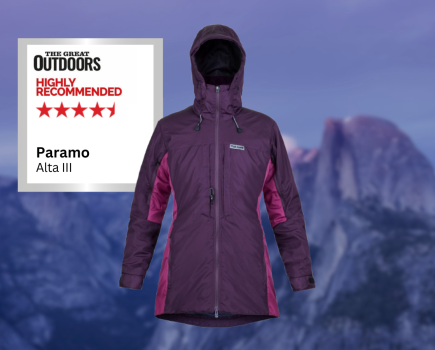Chris Townsend has been out testing the Samsung Galaxy Xcover 7. Take a look below to see what he thought about this outdoor smartphone.
Rugged phones are a good choice for the hills. Reliability is important when your phone is a navigational tool and could be a lifeline in an emergency. Not having to worry about rain, dust or knocks is good for peace of mind. I like not having to use a case too. Rugged phones used to be bulky and heavy with a rubberised exterior that screamed “look at me, I’m tough”. They might be fine on construction sites but hardly so for everyday use. The size and weight were off-putting for hill use too. In recent years this has changed and there are now many rugged phones that don’t look much different to ordinary ones. Samsung were one of the first to make such a phone with the XCover range. I bought one of these, the XCover Pro, in 2020 and have been very pleased with it.
Chris Townsend Recommends
The XCover 7 isn’t as fast and doesn’t have all the features of cameras costing two and three times as much but it is much tougher. I think it’s a great choice for the hills.- water, dust, and drop resistant
- Removable battery
- Limited camera
- Battery could be more powerful
| Quick specs | |
|---|---|
| Price: £349 Weight: 242g Size: 169.0 x 80.1 x 10.2mm Operating system: Android 14 Memory: 128GB internal, MicroSD up to 1 TB Battery: 4050 mAh, removable Camera: main camera 50mp 26mm f1.8 with 10x digital zoom, front camera 5mp 32mm f2 Features: IP68 dust/water resistant, drop-to-concrete resistance up to 1.5m, Corning Gorilla Glass Victus screen https://www.samsung.com |
This year Samsung has launched a new model in the series, the XCover 7, which is even more robust than the XCover Pro. It’s a 5G smartphone and can connect to five different positioning satellite systems. At a glance it looks like any other black slab phone. However the back has four blocks of slightly raised diagonal grooves that make for a secure grip.
The screen is made from tough Corning Gorilla Glass Victus + and has a raised rim round it for extra protection. The phone has an IP68 dust and water resistance rating, which means it should survive immersion in water up to a depth of 1.5 metres for 35 minutes. It’s built to MIL-STD-810H standards too and can survive drops on to rocks from a height of 1.5 metres. I’ve used it in rain and carried it without a case in a jacket pocket where it has been bumped and scraped and it’s been fine.



A highlight of the phone is the removable battery, something very rare these days. This feature is why I chose the XCover Pro. Swapping batteries only takes a few minutes and you have a usable phone straight away rather than having to attach it to a battery pack and then wait while it charges. The battery isn’t as powerful as some (5000 mAh + isn’t unusual) but one charge easily lasts me for a day of checking my position every so often and taking photos. I’d rather have a removable battery than a more powerful non-removable one. A spare battery weighs 76 grams.
The Samsung Galaxy Xcover 7 has an adequate camera but not the many options offered by top end cameras such as ultrawide and zoom lenses. In bright light it takes good pictures but it’s not one for low light.
The Samsung Galaxy Xcover 7 isn’t as fast and doesn’t have all the features of cameras costing two and three times as much but it is much tougher. I think it’s a great choice for the hills.








